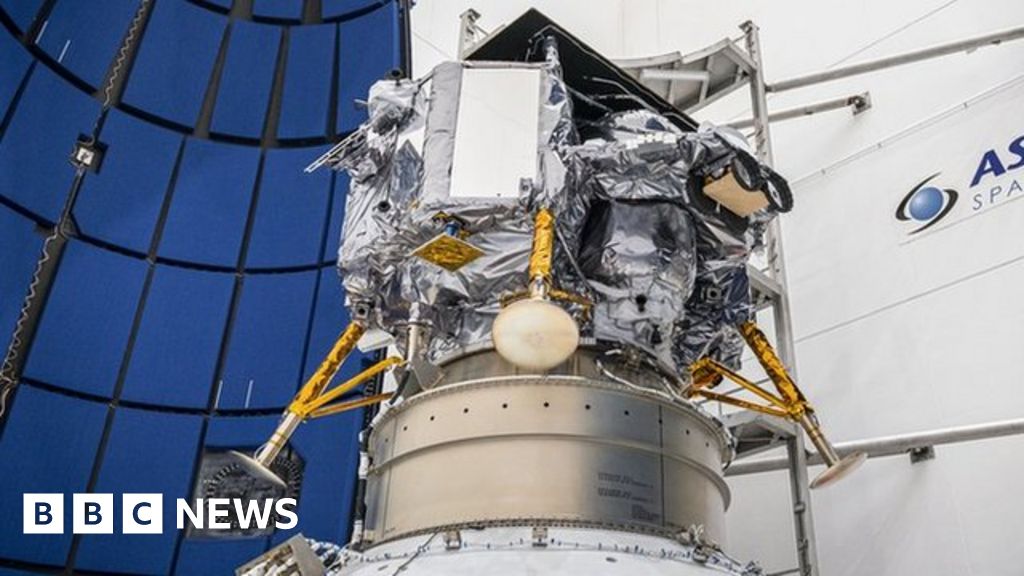- By Jonathan Amos
- Science correspondent
Peregrine looks towards a crescent Earth, at top-right
The US company that was hoping to land on the Moon will bring its mission home to destruction in the coming hours.
Astrobotic says its Peregrine spacecraft will be directed to re-enter the Earth’s atmosphere and burn up.
The lander suffered a major propellant leak shortly after launching from Florida on its Vulcan rocket last week.
Although engineers were able to stabilise the situation, the loss of oxidiser meant a safe touch-down on the lunar surface could never be attempted.
Pittsburgh-based Astrobotic has decided to dispose of the craft, rather let it wander aimlessly through space, posing a collision hazard.
The company hasn’t indicated precisely where and when Peregrine will come down, but independent analysis of its trajectory suggests the re-entry will occur over the Pacific Ocean, somewhere east of Australia.
Astrobotic’s goal had been to deliver five US space agency (Nasa) instruments to the Moon’s surface, to study the local environment ahead of the return of astronauts later this decade.
Had the Peregrine craft been able to land successfully, it would have become the first American mission in half a century to do so, and the first ever private venture to achieve the feat.
Only government agencies from the US, the Soviet Union, China and India have managed controlled lunar landings to date.
But Astrobotic can console itself with what it did manage to accomplish from a difficult situation.
Artwork: How Astrobotic envisioned Peregrine on the lunar surface
Engineers were able to diagnose what went wrong with Peregrine and then eke out life in the lander far beyond what seemed possible at the start.
The fault was traced to leaking propellant from a ruptured oxidiser tank. This was generating a thrust, turning the craft and preventing it from keeping its solar panels constantly pointed at the Sun – vital to maintain a power supply.
The Astrobotic team worked the thrusters on Peregrine to restore stable pointing, but this of course used up even more of the rapidly depleting oxidiser.
Nonetheless, payloads onboard were activated, proving their space-worthiness, and some were even able to gather data, such as on the nature of the radiation environment between Earth and the Moon.
The instrument was reported to be performing well in the check-out tests. The technology should have the opportunity to fly again on later lunar missions.
Image source, Intuitive Machines
Intuitive Machines is the next US company to attempt a soft-landing on the Moon
Astrobotic is the first of three US companies to send a lander to the Moon this year under a new private-public partnership with Nasa.
The agency is buying transport services from the Pittsburgh firm and two other commercial ventures – Intuitive Machines and Firefly. Together, the trio had planned six missions to the lunar surface in 2024.
Astrobotic should get a second go in the back half of the year when it tries to land a Nasa rover called Viper. Houston-based Intuitive Machines’ first attempt is likely to launch next month. Its Nova-C craft will be aimed at the lunar south pole.
Before then, the Japanese space agency will try to put down safely close to a near-equatorial impact crater called Shioli. This event is scheduled for 15:20 GMT on Friday.

Dr. Thomas Hughes is a UK-based scientist and science communicator who makes complex topics accessible to readers. His articles explore breakthroughs in various scientific disciplines, from space exploration to cutting-edge research.








